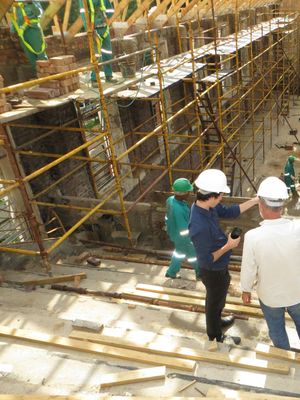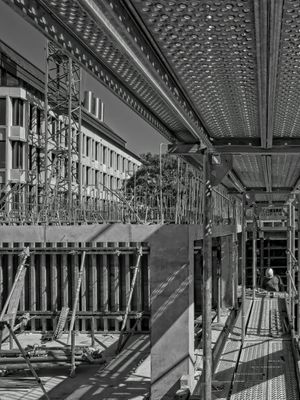Understanding Turnkey Projects:
FAQs and Key Differences Explained
Find Clarity in the Top 5 Common Questions
01.
What is an example of a Turnkey Project?
Traditionally, the term "Turnkey" is often used in construction projects.
In construction, a prime example of a Turnkey Project is the development of a commercial office building. This approach streamlines the entire process for clients, who entrust a construction firm with every aspect of the project. From securing permits to managing subcontractors, the construction firm handles it all. Compliance with building codes is ensured throughout, resulting in a fully operational office space upon completion, ready for immediate occupancy. Here's a breakdown:
- Procurement of permits
- Hiring and management of subcontractors
- Comprehensive oversight of the construction process
- Adherence to building codes and regulations
- Delivery of a fully functional office building
Your Questions, Our Answers
02.
What Is A Turnkey Contract?
Understanding Turnkey Contracts
Turnkey contracts involve manufacturers, construction firms, and consulting companies, all collaborating to deliver fully equipped and operational projects.
A Turnkey contract is a comprehensive agreement where an independent agent takes charge of all aspects of a project, providing materials, labor, and completing all necessary work for a fixed price. Here's a breakdown:
- The contractor handles engineering, procurement, and construction work.
- Upon completion, the contractor delivers the finished project to the buyer.
- Turnkey contracts encompass everything needed for a specific purpose.
- Owners typically pay a premium, including a contingency allowance for unforeseen costs.
- Contractor's responsibilities conclude upon project completion and functionality.
- Turnkey contracts are common in industries like engineering equipment manufacturing, construction, and consulting.
FAQs Made Simple
03.
What is the major difference between a Turnkey Project and a Design-Build?
In construction, builders adopt various approaches to project execution. Two common methods are Turnkey and Design-Build construction. Although they share similarities, crucial distinctions exist, influencing project outcomes significantly. Below we explain the meanings of Turnkey and Design-Build construction and highlight their disparities.
The Differences Between Turnkey and Design-Build Construction:
While Turnkey and Design-Build construction methods involve a single point of contact, some significant differences exist.
- Responsibility: In Turnkey construction, the builder assumes full project responsibility, including design and construction, with the owner retaining partial accountability.
- Control: Turnkey projects cede all control to the builder, while design-build empowers owners with greater project oversight and collaboration opportunities.
- Timeline: Turnkey projects typically achieve faster timelines due to streamlined processes, while design-build may encounter longer durations due to coordination complexities.
- Cost: Turnkey projects may incur higher costs, reflecting the builder's risk assumption, whereas design-build allows owners to negotiate and optimize budgets collaboratively with contractors.
Quick Answers to Frequently Asked Questions
04.
What are the Advantages of Turnkey Construction?
Advantages of Turnkey Construction
Turnkey construction streamlines project delivery by placing full accountability on a single contractor for design, construction, and commissioning. Here's why it's advantageous:
-
Faster Completion: With an integrated team, Turnkey Projects boast faster timelines, ensuring prompt project delivery without compromising quality.
-
Reduced Client Risk: Clients benefit from minimized risk exposure as they interact solely with one contractor, who assumes liability for all project facets, from design to construction.
-
Simplified Communication: Offering a singular point of contact, Turnkey construction facilitates seamless communication between clients and contractors, alleviating coordination complexities.
-
Stress Reduction: Clients experience reduced stress and hassle, relieved of the burden of project management, allowing them to focus on other priorities.
-
Cost Efficiency: Leveraging their expertise, Turnkey contractors optimize project costs by sourcing materials and labor judiciously and managing tasks efficiently, resulting in potential cost savings for clients.
05.
Why is it called Turnkey?
The Origin of "Turnkey"
The word is a reference to the fact that the customer, upon receiving the product, just needs to turn the ignition key to make it operational, or that the key just needs to be turned over to the customer.
Copyright © All Rights Reserved







